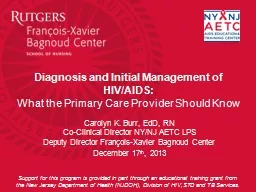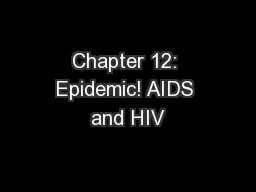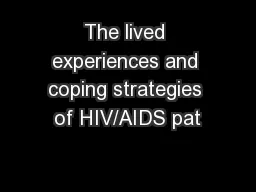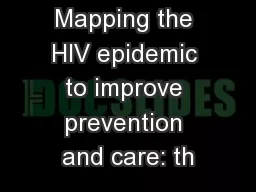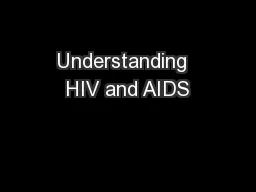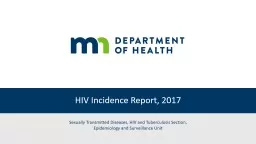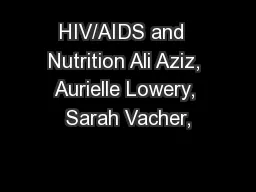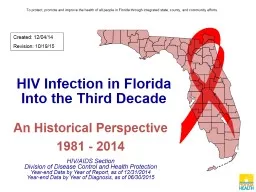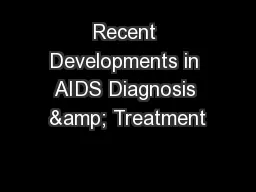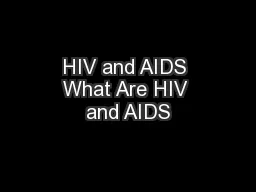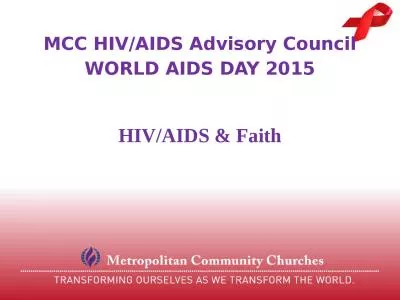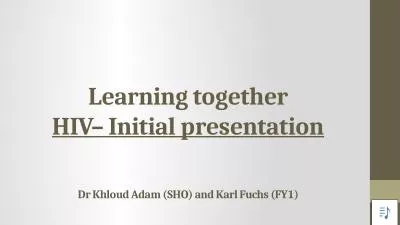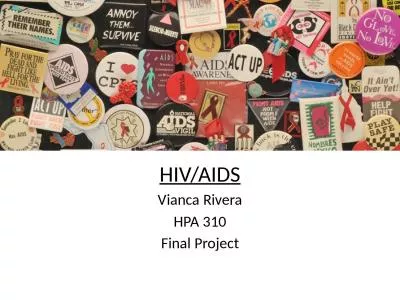PPT-Diagnosis and Initial Management of HIV/AIDS:
Author : cheryl-pisano | Published Date : 2018-12-06
What the Primary Care Provider Should Know Carolyn K Burr EdD RN CoClinical Director NYNJ AETC LPS Deputy Director FrançoisXavier Bagnoud Center December 17
Presentation Embed Code
Download Presentation
Download Presentation The PPT/PDF document "Diagnosis and Initial Management of HIV/..." is the property of its rightful owner. Permission is granted to download and print the materials on this website for personal, non-commercial use only, and to display it on your personal computer provided you do not modify the materials and that you retain all copyright notices contained in the materials. By downloading content from our website, you accept the terms of this agreement.
Diagnosis and Initial Management of HIV/AIDS:: Transcript
Download Rules Of Document
"Diagnosis and Initial Management of HIV/AIDS:"The content belongs to its owner. You may download and print it for personal use, without modification, and keep all copyright notices. By downloading, you agree to these terms.
Related Documents

